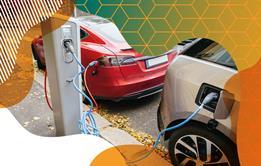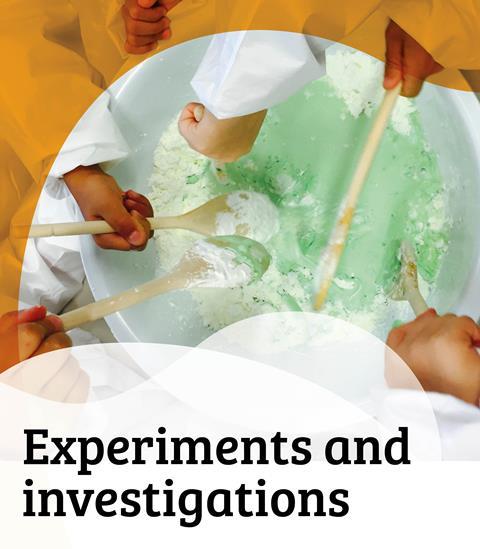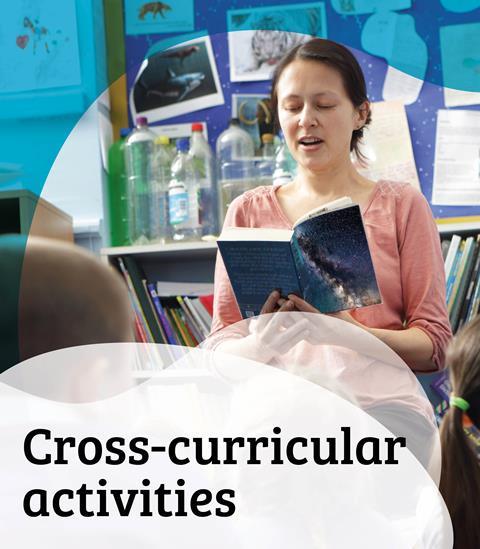Use the materials found in mobile phones and how different materials decay as contexts for teaching about materials
This resource is also available in Welsh and Irish
Get the Welsh language version.
Get the Irish language version.
What’s the story behind the materials used in mobile phones? How do natural substances decay differently from plastic waste? This topic web contains sustainability context ideas and classroom activity suggestions for teaching about materials to 9–11 year olds. Discuss the backgrounds of materials that are found in mobile phones or explore how different materials decay.
Each web explains the background science, describes how scientists are working in this field, and suggests ways to explore this in the classroom.
How to use this topic web
This resource is part of our Sustainability contexts for primary science teaching series. The series features a total of 20 topic webs designed to help you link your existing curriculum teaching to sustainability issues.
Find out more about how to use this topic web in your teaching.
-

Download this resource
Get both topic webs on decaying and materials in mobiles for 9–11 years, with tips and suggested activities to use in the classroom.
Topic web 1: The true cost of your mobile phone
What’s the science?
Smart phone functions rely upon a group of elements called the ‘rare earth metals’. They are used in the circuitry, vibration units, speakers, polishing and in the colour screen. As their name suggests, they are ‘rare’. Other metals used in smartphones also have limited availability or will be exhausted in a century or less. Components can also be produced from ‘conflict elements’ such as tungsten, tin, and gold. Scientists seek to address these issues to maintain supply.
What are scientists doing about it?
Science gave the world mobile phones, and it is science which is leading the way in maintaining their sustainability. A periodic table of elements used in these devices has been produced to highlight the problems with sustainability. Chemists are seeking alternatives to rare, or controversially obtained metals, and more efficient ways of extracting them from old, recycled, phones. This is especially important as lots of new ‘green’ technologies also rely on these elements.
How could you explore this in the classroom?
- Ask learners to address the issues of sustainability of mobile phone components. Provide sources of information such as the video and poster ‘Elements of a Smartphone’. The periodic table of elements will help them see the problems that exist with sustainability of the elements.
- Conduct a ‘Diamond Nine’ where learners can assess their attitudes towards mobiles. Create nine cards, each with a statement relating to mobile phones. For example:
- Child labour is often used to mine aluminium, gold and cobalt – all are used to make smart phones.
- 52% of people between the ages of 16 and 24 have 10 or more electronic devices in their home.
- Learners can then order the statements into a diamond (1-2-3-2-1) with the most ‘important’ fact at the top.
- Within PHSE learners could discuss attitudes. Within numeracy, learners could carry out a survey of the number of unused devices at home and record their results. Within literacy, learners can work in groups to create presentations of the issues raised.
Curriculum links
Living things and their habitats; numeracy; literacy; PHSE; geography.
Topic web 2: How resources decay
What’s the science?
Natural materials have been decaying harmlessly and being re-incorporated into the Earth throughout its history. Some synthetic products, however, decay incredibly slowly, persisting in landfill and oceans for centuries and leaching poisonous chemicals as they degrade. The future sustainability of the Earth’s resources relies upon being able to reduce harmful waste.
What are scientists doing about it?
Scientists are working on producing plastics made from natural materials that decay harmlessly. They are also researching more sustainable ways of disposing of plastics, for example plastic derived from corn starch is being used in compost and dog-poo bags. PET, one of the most common plastics can now be decayed using enzymes. As they break up, plastics in the ocean may be ingested by marine life, so scientists and engineers are developing structures that can be used to collect marine debris.
How could you explore this in the classroom?
- Show a timelapse video of decaying fruit. Decay caused by bacteria is called biodegradability. Plastics will not typically biodegrade.
- Wear clean gloves to peel an apple. Cut it in half on a clean surface. Place one half into a jar (preferably sterile) and securely fix the lid. Freely handle the second half (pass it around). Place this half in an identical jar (non-sterile) and seal. Ask for predictions as to what may happen.
- Over the course of two to three weeks the second apple will decay much quicker, growing a variety of moulds depending on the bacteria on people’s hands. (You can link this with personal hygiene in PHSE.)
- Print photographs of common materials for sequencing by ‘decay time’. Using sticky notes, ask learners to estimate time periods of decay for each object.
- Use numeracy skills to represent decay times on a graph and calculate decay time differences between objects. Learners can also create a timeline of decaying objects and in literacy can write about or debate what should be considered rubbish. They should use vocabulary such as biodegradable and non-biodegradable.
Curriculum links
Living things and their habitats; observing and making measurements; numeracy; literacy; PHSE; states of matter; microorganisms.
Try these additional resources
- Try more sustainability topic webs to provide context for key topics in primary science, including electricity and chemical changes for 9–11 year olds.
- Explore materials further with our topic webs on materials for 4–7 and 7–9 year olds.
- Read up on the background science for properties of materials, grouping materials with our That’s Chemistry! chapters.
- Find out more about careers in chemistry such as Mike’s role as a sustainability manager by exploring the job profiles on A Future in Chemistry.
Downloads
Decaying and materials in mobiles | 9–11 years
PDF, Size 0.11 mb
Sustainability contexts for primary science

Find out how to teach science curriculum topics through engaging sustainability contexts. Our topic webs include suggestions for classroom activities that develop numeracy, literacy and scientific skills.
- 1
- 2
- 3
- 4
- 5
- 6
- 7
- 8
 Currently
reading
Currently
reading
Decaying and materials in mobiles | 9–11 years
- 10
- 11



































No comments yet